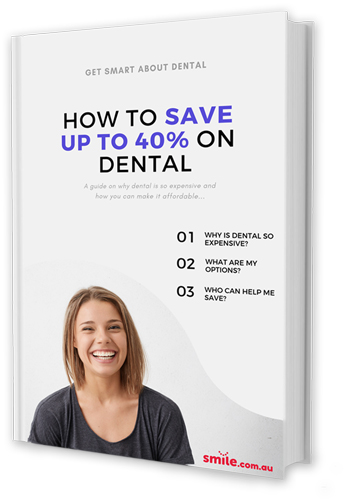Infection or Pain After a Root Canal Treatment
Reviewed June 2024 by Our Content Experts
Is it normal to have pain after a root canal?
It's common to experience some pain or soreness for 3-5 days after a root canal treatment. This is because while the nerve inside the tooth is cleaned out and removed, there are still sensitive nerve endings being exposed in the ligament surrounding the tooth.
When there's inflammation and swelling caused by a damaged or decaying tooth, this ligament can also be swollen or damaged. It generally takes a while for the swelling to subside and the tissue to return to normal following a root canal.
If the pain persists for a few days following your treatment, or if the tooth feels better then hurts again, this can be a sign of infection.
Signs of a failed root canal
Signs and symptoms of a failed root canal treatment may include:
- Swelling – Swelling of the face or inside of the mouth can indicate reinfection.
- Discharge – Discharge from around the treated tooth can be a sign of reinfection and the formation of an abscess.
Inform your dentist or endodontist if you experience these symptoms.

Find a Smile Dentist Near You!
What causes pain or infection after a root canal?
If bacteria enters the root canal, it doesn't take long for an infection to form. If you're experiencing pain or infection following a root canal, it could be a result of one of the following complications:
- Unfilled or missed canals – Root canals can fork out into several offshoots. When these offshoots are too small for the dentist to detect and treat, these untreated parts of the root canal can cause infection and irritate the tissues around the tooth's root.
- Cracked tooth roots – While root canals can be cleaned out and sealed, cracks in a tooth's roots can't be treated, and bacteria that enters the cracks can lead to infection.
- Inadequate seal – The seal created inside a tooth during root canal treatment protects it from bacteria. If the seal is inadequate, the tooth is open to infection.
- Oversized filling – If a tooth filling is too big, it can cause pain to the opposite tooth and increase the risk of infection.
- Inadequate coronal seal – A defective final restoration can allow bacteria to re-enter a tooth.
- Pre-existing tooth issues – If you have a tooth infection or condition prior to your treatment, it can cause bacteria to linger even if your root canal treatment is successful.
- Technical complications – Technical complications, such as broken instruments, can affect the success of a root canal treatment.
How to treat infection after a root canal treatment
The 3 most common treatments for infection after a root canal include:
- Endodontic retreatment – A failed root canal can be retreated with a typical root canal treatment and antibiotics.
- Apicoectomy surgery – If your dentist deems retreatment an insufficient option, an apicoectomy procedure can be performed. Your dentist may refer you to a specialist for this procedure as it involves removing infected tissue around the tip of the root, along with a few millimetres of the root tip itself. A small filling is then used to seal the canal and prevent reinfection.
- Tooth extraction and replacement.
Costs of treating infection after a root canal
Below are the estimated costs of endodontic retreatment:
| State | Regular patients pay |
 Members pay Members pay |
|---|---|---|
| ACT | $1,094 - $1,386 | $927 |
| NSW | $998 - $1,505 | $845 |
| NT | $1,038 - $1,206 | $944 |
| QLD | $1,019 - $1,500 | $911 |
| SA | $1,008 - $1,432 | $856 |
| TAS | $1,075 - $1,475 | $808 |
| VIC | $1,042 - $1,512 | $885 |
| WA | $999 - $1,457 | $860 |
| Notes: Last updated: October 2017. Source: Australian Dental Association's (ADA) annual dental fee survey conducted in October 2016. This dental fee example involves item numbers 013, 022 x2, 415, 417, 419 and 521. It is a guide only and your personal situation should be discussed with your Smile dentist. With Smile dental cover, you get reduced and capped dental fees at any of our 4,000+ Smile dentists. | ||
Depending on the state you live in Smile members can save between $94 and $1,667 on a endontic retreatment.
Below are the estimated costs of tooth extraction and replacement:
| State | Regular patients pay |
 Members pay Members pay |
|---|---|---|
| ACT | $3,525 - $4,970 | $3,017 - $4,170 |
| NSW | $3,452 - $5,930 | $2,934 - $4,925 |
| NT | $3,455 - $3,619 | $2,974 - $3,080 |
| QLD | $3,320 - $5,886 | $2,822 - $4,899 |
| SA | $3,490 - $5,298 | $2,981 - $4,414 |
| TAS | $3,688 - $4,919 | $3,138 - $4,093 |
| VIC | $3,576 - $5,606 | $3,041 - $4,661 |
| WA | $3,690 - $5,638 | $3,142 - $4,694 |
| Notes: Last updated: October 2017. Source: Australian Dental Association's (ADA) annual dental fee survey conducted in October 2016. This dental fee example involves item numbers 012, 311, 633, 631, 661 and 672. It is a guide only and your personal situation should be discussed with your Smile dentist. With Smile dental cover, you get reduced and capped dental fees at any of our 4,000+ Smile dentists. | ||
Depending on the state you live in Smile members can save between $481 and $1,005 on the cost of a tooth extraction and replacement.

